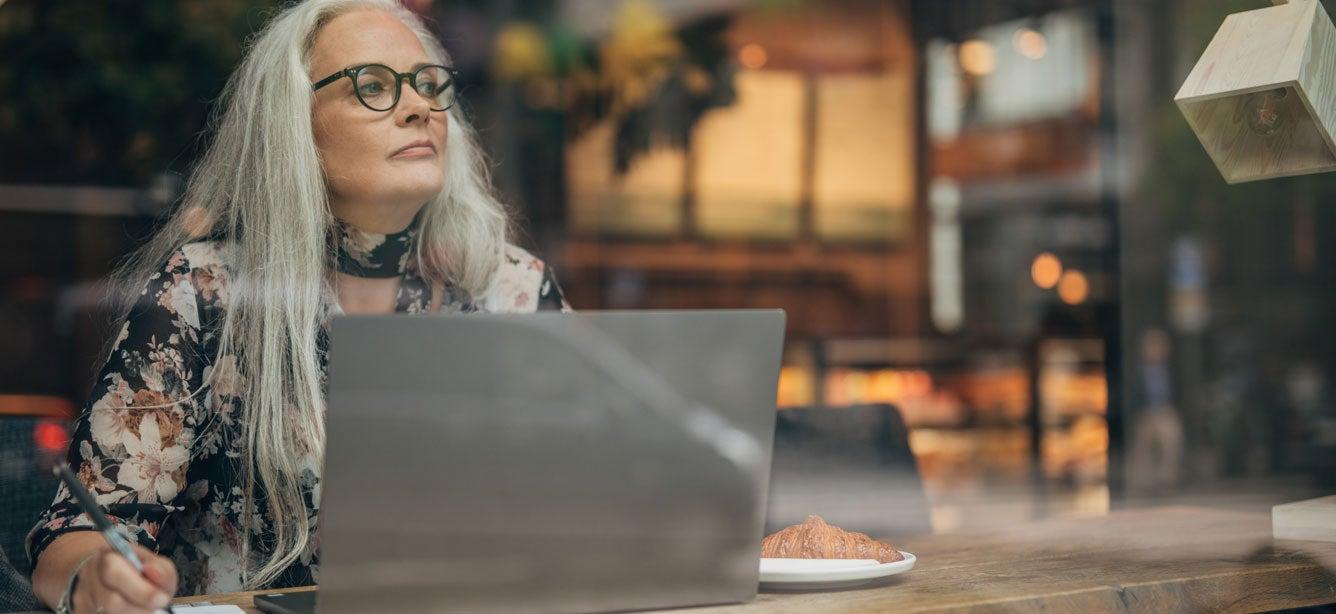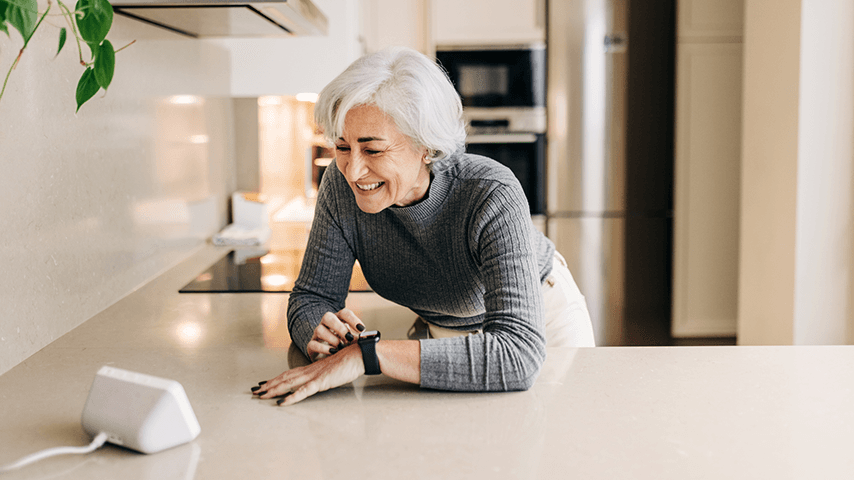
Related Topics
There are good reasons why interactive programs for older adults should take place in museums. Art and music are often called a back door to the brain, especially for those with memory loss.1 Beyond the opportunities for engagement and connection, art can evoke strong, deeply personal responses in us that can both draw from the past but also exist entirely in the moment. Museums are social spaces and places to share experiences on many levels, including interacting with friends and loved ones, with educators and tour guides, with other visitors, and, of course with the art. Museum visitors encounter the creative spirit and are able to engage with the past, but not necessarily a personal past; this is especially powerful for people with dementia who might sense that parts of their own pasts are slipping away.
As the nation’s art museum, it is especially important that everyone is invited to and welcome at the National Gallery of Art in Washington, DC, and that we strive to provide the kinds of experiences individuals want. Moreover, there is power in being with others in the physical spaces of the National Gallery—in hearing the sound of voices, footsteps, and laughter gently echoing off the walls of large gallery spaces, in sensing the shifting light as the sun ducks behind a cloud and then slowly emerges to shine through the skylights, in the subtle difference of walking on marble, wood, or carpeted floors.
The sensory experience is as much part of any program we offer as the discussion prompts we (as facilitators) craft, how we respond to questions and observations, and the order in which we share information to keep conversations moving forward.
The primacy of place, the importance of being in person and onsite for museum programs, is a truth we, in museums, have held dear for generations.
It turns out, we were wrong—at least, in part.
The shift to online arts programs at the National Gallery of Art
When the pandemic struck in earnest in the early spring of 2020, it took some time for the world to adapt to an unexpected and dramatically new way of working and living. For many staff at the National Gallery, that new normal was maximum telework. Once we caught our breath and got our feet under us, we began offering two popular, traditionally on-site programs on virtual platforms. Just Us at the National Gallery of Art, a program for people with memory loss and their care partners, began online in late May and The Art of Looking, a conversation-based program for the general public, went virtual in early June 2020. Both take place as Zoom meetings so participants can unmute and share verbally with the group; others prefer to type thoughts into the chat, which program facilitators read out loud, while some simply listen.
Both the in-person and online versions of Just Us and The Art of Looking are built on the same beliefs:
- There is power in a collective, shared experience centered around a conversation about a work of art;
- We can construct meaning through listening to other ideas and perspectives; and
- We may get more when we slow down and look at less.
Slow looking is not a new concept in museum education, but it has grown in popularity quickly over the past several years.2 For these two National Gallery programs, we built on the approach by emphasizing one critical component: slow listening.
“Slow looking” means slowing the pace of conversation, slowing down the process of sharing information, and slowing our bodies down to physically linger (with stools, chairs, or online) in one location to spend more time with a work of art and with the community of participants in any given program. “Slow listening” means being fully present to actively listen, and to be completely absorbed in the conversation without planning the next comment, the next question, or the next move.
The way we practice slow looking and listening grew out of the Just Us program, for the accommodation we provide for people with memory loss is time.
Just Us and its impact on older adults with memory loss
Designed equally for those with memory loss and their care partners and loved ones, Just Us began in the early spring of 2017 and took place twice a month at the museum for those caring for loved ones at home. It was also offered by request for groups visiting from memory care residences and the like. In the museum, the conversation-based program would last 90 minutes as we discovered two or three works of art together from our perches on comfortable chairs in the galleries. The only substantial alteration we made when we moved online was reducing the time to 75 minutes (Zoom fatigue is real!) and we started offering the program weekly (on Mondays at 2:00 pm Eastern).
Because it can take a long time—90 seconds to 24 hours or longer—for a person with dementia to take in and put words around an observation or question, we, as educators, learned to slow the pace of conversation to allow for long pauses and silences. We remove any sense urgency or pace to exist only in the moment.
Therein lies the true power of the program. The practice of focusing entirely on being in the moment neutralizes the diagnosis and everything that comes with it. Doing so creates a time and space where people can connect in a single, ongoing, artful moment removed from appointments, reminders, and, hopefully, worry.
The Art of Looking carrying on the art of slow looking and listening
The Art of Looking is, in essence, a Just Us program for the general public, and it has been hugely successful in the online format. When it began on site in its current iteration in the summer of 2019, it took place once a month as a drop-in program in the galleries, where the 50-70 participants would be broken into smaller conversation groups to spend one hour with one work of art.
When the program shifted to a virtual platform in the summer of 2020, fourteen participants attended the first session, and 125 the second. Now hundreds of people register for each meeting, and participants are assigned to smaller breakout rooms for conversation groups. The Art of Looking was offered weekly when the National Gallery was closed to the public (this past winter and spring) and is now offered on the first, third, and fifth Friday of each month.
Facilitators still embrace the pauses and silences that have become a hallmark of Just Us, which allows for as many participants as possible to have the chance to collect and share observations and ideas. Participants build meaning as a group through the slow, collective looking and listening.
How the arts helps older adults with social isolation
Just Us and The Art of Looking share two additional, critical goals: in both programs, we hope that participants in both feel connected to art, to National Gallery educators, and to each other; and that participants feel heard and valued. These goals have been and remain especially important during the pandemic, when so many felt isolated, disconnected, and adrift.
Online sessions are simply more accessible to more people: participants log in from literally across the country and from around the world. Virtual programs are also more accessible because it can be complicated for some to metro into the city and walk to the museum, or try to find street parking and then the program meeting location in a building complex with five entrances.
Variety and choice are touchstones in creating accessible, engaging experiences for all. We’ve learned that online programs have a vibrant, meaningful place in the museum world.
Sources
1. See, for instance, “Art and Music” found online at https://www.alz.org/help-support/caregiving/daily-care/art-music. Accessed June 29, 2021.
2. For more on slow looking as an approach in museum education, see Shari Tishman, Slow Looking: The Art and Practice of Learning through Observation, New York: Routledge, 2018.


